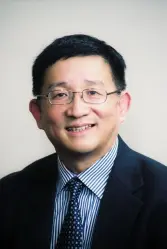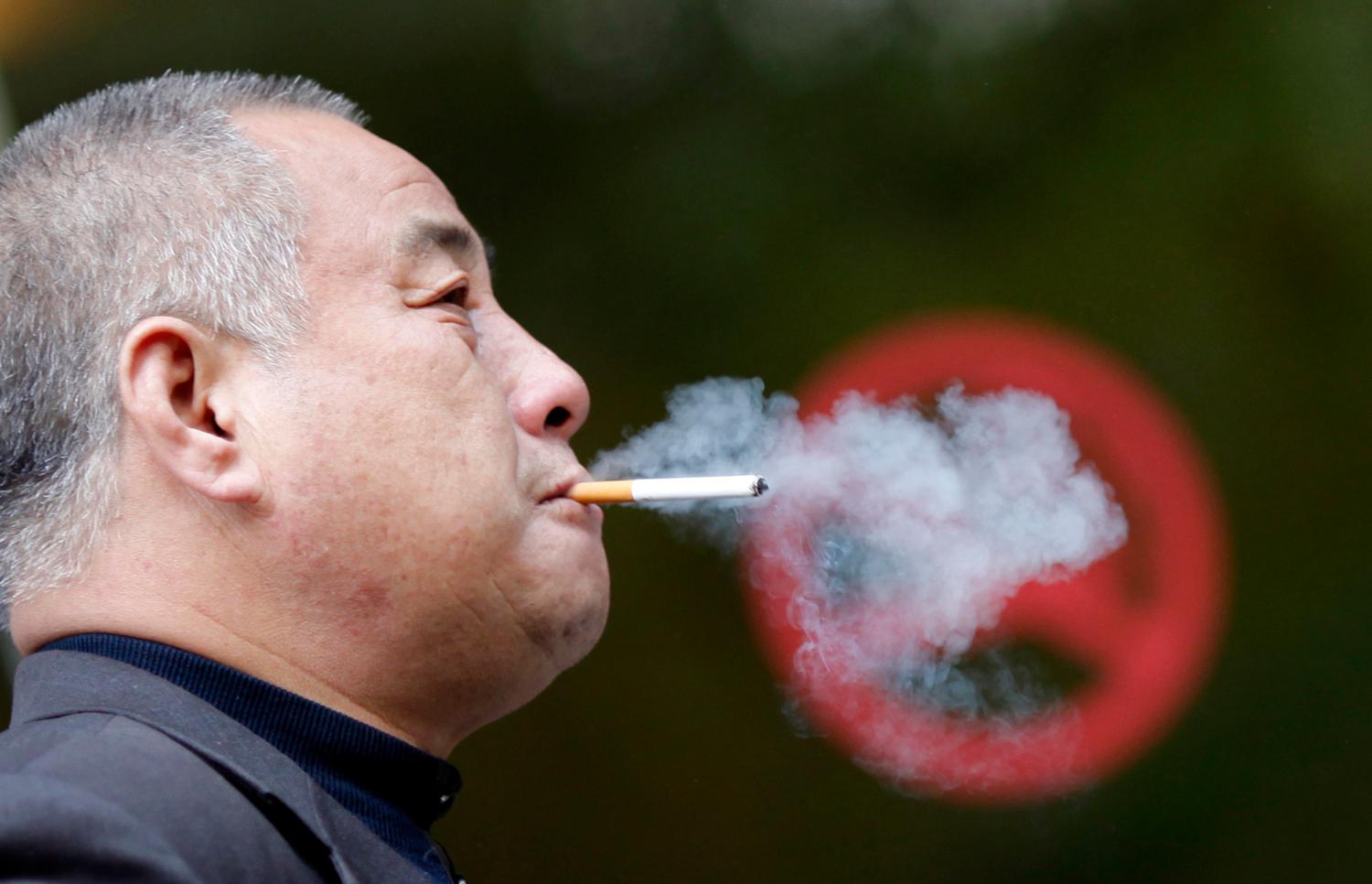EXECUTIVE SUMMARY:
The high prevalence of tobacco use in China is not only the country’s single most serious public health problem, but also constitutes the ultimate test case for the global tobacco control campaign. While China’s remarkable economic growth over the past three decades has been one of the most amazing miracles of our time, the country has also gained a reputation as “the smoking dragon” due to its rapidly growing tobacco industry and ongoing smoking-related health crisis. The anti-smoking campaign in China, despite daunting challenges and deep-rooted institutional barriers, has the potential – and the unprecedented opportunity – to change the course of the tobacco epidemic within China and in the world. The drafting of a political map of China’s tobacco industry and its main stakeholders is essential for the next phase of the campaign.
Daunting Challenges
Presently, the People’s Republic of China (PRC) is the world’s biggest tobacco producer, largest cigarette consumer, and gravest victim of the smoking-related health crisis:
- The Chinese tobacco industry produces over 2.3 trillion cigarettes every year. China’s total production of cigarettes accounts for 40 percent of the world’s total — about four times more than the United States, the second largest tobacco-producing country. China’s production is roughly equivalent to the combined production of the next seven largest tobacco-producing countries.
- China is home to one-quarter of the world’s smokers, who consume a third of the world’s cigarettes. Over 300 million Chinese citizens smoke cigarettes every day. The prevalence of smoking has not changed much over the past decade.
- Tobacco-related diseases cause 1.2 million deaths in the country every year, accounting for 12 percent of total deaths. Tobacco now kills 90 times more Chinese citizens each year than HIV/AIDS. Meanwhile, according to PRC researchers, approximately 738 million Chinese people are affected by secondhand smoking. Unless effective tobacco control measures are promptly adopted, total casualties are expected to increase to 2 million per year by 2020, with half dying between the ages of 35 and 64.
Institutional Barriers
Despite growing public concern over the smoking epidemic’s severe health consequences, as well as the massive long-term economic burden it presents, Chinese authorities have been slow to acknowledge this increasingly devastating public health crisis. Their hesitance to effectively curtail tobacco production and consumption is driven primarily by the fact that the tobacco industry is one of the largest sources of tax revenue for the Chinese government. Over the past decade, the tobacco industry has consistently contributed 7-10 percent of total annual central government revenues, similar to a number of lucrative and fast-growing sectors such as real estate and petroleum. According to the Chinese government’s data, in 2011 the Chinese tobacco industry generated over 753 billion yuan (US$119.5 billion) in commercial and consumption tax and profits, and turned over 600 billion yuan (US$95.2 billion) to the state as revenue.
There is also a political dimension to the Chinese leadership’s reluctance. At a time when the country faces serious pressure to forestall an increase in unemployment and the social unrest that would result, the Chinese leadership tends to maintain or even promote tobacco production, eager to safeguard the jobs of its significant numbers of employees in farming, sales, and other related businesses. Officials tend to consider a proposed increase in cigarette consumption tax, which could reduce the prevalence of smoking, as politically risky because of its potential to stoke public resentment and social unrest among the country’s vast body of low-income smokers.
The national political leadership is certainly not the only player that has a huge stake in the country’s tobacco development. Various bureaucratic institutions at the center, a number of local governments, and major tobacco companies are also key players that aim to protect and advance the interests of the tobacco industry. The State Tobacco Monopoly Administration (STMA) monitors the tobacco industry in China. At the same time, STMA, often referred to as “the last bastion of China’s planned economy,” controls 98 percent of the country’s cigarette market in its capacity as the China National Tobacco Corporation. Some provincial governments, most notably that of Yunnan Province, consider tobacco production to be the “pillar of the economy” in their regions. In recent years China’s tobacco companies have frequently engaged in large-scale acquisitions and mergers. They aim to become bigger, more efficient, and more competitive in both domestic and global markets. All of these factors constitute major institutional and political barriers for tobacco control and anti-smoking campaigns in the PRC.
Significant Progress
However daunting these challenges may seem, certain remarkable accomplishments of the past decade suggest there is cause for some optimism. In 2003, for instance, the PRC signed the World Health Organization Framework Convention on Tobacco Control (FCTC), an international tobacco control treaty that was a landmark event in China’s (and the world’s) tobacco control and anti-smoking campaigns. The PRC then ratified the treaty in 2005. By ratifying the treaty, the Chinese government has legitimized the tobacco control movement. Since then, tobacco control NGOs have been able to argue that they are not challenging the Chinese authorities, but rather are working for the more effective implementation of an approved treaty. The 2008 Beijing Olympic Games and 2010 Shanghai World Expo were notable for their strong commitments to, and effective implementation of, smoke-free environments.
The 12th Five-Year Plan, which was passed at the National People’s Congress (NPC) meeting in March 2011, was the first in the history of China’s five-year plans to adopt a resolution calling for the “full implementation of a smoking ban in public places.” Never in the six-decade history of the PRC has the Chinese public been so aware of the negative impact of smoking on health. To a great extent, China’s tobacco control and anti-smoking campaigns are bottom-up movements. Various segments of society – public health workers, intellectuals, legal professionals, journalists, cultural celebrities, and non-governmental organizations (NGOs), both domestic and foreign — have played indispensible roles in these accomplishments.
The involvement of these non-governmental actors, of course, does not detract from the importance of the Chinese leadership — both past and future — in helping China join the international community in the search for what could be one of the biggest advances in health security in the 21st century. As in other parts of the world, a strong political commitment on the part of the top leadership in China is one of the most essential ingredients in successful tobacco control. Without it, legislation and coordination mechanisms among various government agencies at all levels, even if meticulously planned in isolation, will be ineffective.
Top leaders of the Chinese Communist Party (CCP) need to be persuaded that promoting public health and confronting the tobacco epidemic is in the best interest of their political careers and the ruling party’s larger legacy in governance. This is especially true at a time when public opinion has become increasingly important. Major public health crises can be politically fatal for individual leaders, or perhaps even for the CCP regime itself.
Unprecedented Opportunities
The changing nature of Chinese leadership politics and growing factional competition provide an unprecedented opportunity for more successful tobacco control efforts. Despite the highly diverse and divergent assessments of Chinese elite politics that populate the field of China studies, the last decade has witnessed a surprisingly strong consensus emerge that describes the country’s historic transformation from a system led by one strongman, Mao Zedong and then Deng Xiaoping, to a new form of collective leadership. Members of the new collective leadership tend to be weaker. Leaders’ weaknesses do not mean that they would avoid new or controversial policy initiatives, but rather they have more incentive to win public support through new policy interventions and through being more responsive to public opinions. As different leaders and competing factions are captured by different interest groups and constituencies, they are more, not less, motivated to seek a popular image and generate public support, especially regarding such a crucial and sensitive issue as public health security.
The Politburo of the CCP, especially its nine-member Standing Committee (China’s supreme decision-making body), now consists primarily of two informal and almost equally strong coalitions that compete against each other for power, influence, and their respective policy preferences. These two groups can be labeled the “populist coalition,” led by President Hu Jintao, and the “elitist coalition,” led by NPC Chairman Wu Bangguo. The two leading power contenders in the next generation of leaders (the so-called fifth generation), each represent one of these two coalitions: Vice President Xi Jinping is an elitist and Executive Vice Premier Li Keqiang is a populist. Xi and Li are expected to succeed Hu Jintao and Wen Jiabao at the 18th National Congress of the CCP in the fall of 2012 and the 12th NPC in the spring of 2013.
Although these upcoming leaders will probably not be inclined to diverge from their predecessors until they have solidified their positions, it is already evident that both Xi and Li wish to pursue new policy priorities (e.g., further market liberalization for Xi and the promotion of clean energy for Li). Other power contenders in the fifth generation have sought to differentiate themselves from their fellow competitors by targeted advocacy for certain policy objectives – whether these be affordable housing, social welfare reform, basic health care programs, a higher minimum wage, anti-corruption, government accountability, or intra-party democracy. Indeed, prior to the attempted defection of former Chongqing Policy Chief Wang Lijun, who fled to the U.S. Consulate in Chengdu in February 2012, the political self-promotion campaigns by two Politburo members – former Chongqing Party Secretary Bo Xilai and Guangdong Party Secretary Wang Yang – were truly incredible for a one-party Leninist state known for its strict prohibition on political lobbying on the part of individual leaders. Although Bo’s campaign ended with his purge due to criminal charges against him, the game of Chinese elite politics has profoundly changed.
Meanwhile, never has the PRC witnessed such extraordinary openness and pluralism in its intellectual and political discourse on the eve of a political succession. China’s ongoing intellectual and political debates are not limited to the realm of ideas and values – they also seem closely linked to politics and the interests of heavyweight politicians and political factions. The Chinese public seems increasingly aware of the ongoing political tensions and policy differences within the leadership, especially between some of its most prominent rising leaders.
It should be noted that tobacco control and the smoking-related epidemic are not currently major issues at the highest levels of politics. No Chinese politician at the Politburo level or above has attempted to make anti-smoking initiatives his or her hot button issue. Still, three situational factors related to the Chinese top leadership have strong symbolic implications – and potentially profound ramifications — for China’s anti-smoking campaign:
- None of the current nine members of the Politburo Standing Committee is presently a smoker. In the 25-member Politburo, only five leaders (20 percent) are smokers, and they rarely smoke in public, in sharp contrast to previous top Chinese leaders such as Mao and Deng.
- Vice President Xi Jinping’s wife, Peng Liyuan, the likely soon-to-be first lady of China, has served as an “Anti-Smoking Ambassador” for the Chinese Association on Tobacco Control along with Yao Ming and other Chinese celebrities since 2009. Peng is a famous Chinese folk song singer who has spent her career in the People’s Liberation Army (PLA), where she currently holds the rank of major general.
- Executive Vice Premier Li Keqiang’s brother, Li Keming, has served as Deputy Director of the State Tobacco Monopoly Administration since 2003. In fact, Li Keming has worked in the tobacco industry for the past three decades. This is particularly ironic – and insensitive on the part of the soon-to-be premier – as Li Keqiang has been in charge of China’s public health since 2008.
All of these situational factors may be crucial to the battle for tobacco control in the near future. The Chinese public and anti-smoking NGOs can be mobilized in a politically consequential way to enhance public awareness about the stakeholders on both sides of tobacco-related developments. The dynamic tensions between various forces involved on this front further illustrate the need for the anti-smoking campaign to develop a strategic map with which to better navigate this otherwise very complicated, largely opaque, and undoubtedly political terrain.
Political Mapping
The main objective of this study is to focus on the political mapping of the key players, institutions, and forces related to China’s tobacco industry and its impact on the country’s public health. Specifically, the study provides four levels of analysis:
- The Top Political Leadership Level. An effective anti-smoking campaign must persuade political decisionmakers to recognize the political incentives (or the political liability) to support efforts to curtail tobacco production and consumption. The study illustrates the profound generational differences in the Chinese leadership in terms of their attitudes and behaviors regarding smoking. With an overview of the current members of the Politburo and its Standing Committee as well as more detailed profiles on a few key figures related to public health, the study explores both the idiosyncratic backgrounds of individual leaders and the factional dynamics of the country’s most powerful decision-making body.
- The National Institutional Level. The implementation and coordination of tobacco control policies are usually as important as the policies themselves. The study examines the institutional roles and mechanisms of bureaucratic institutions as well as their interactions. This includes China’s eight central government organs led by the Ministry of Industry and Information Technology, which are responsible for China’s FCTC implementation. The study reveals the ultimate tensions between the commercial incentive for the promotion of “tobacco economy” and the public health necessity for tobacco control on the part of central governmental agencies.
- The Provincial Level. Efforts to curtail tobacco production in China will inevitably touch a nerve for certain provincial governments because of their reliance on the tobacco industry’s significant contributions. At this level of analysis, the study focuses on Yunnan Province – how the tobacco industry plays a central role in the local economy, how the revenue divide intensifies the tensions between the central and provincial governments, how tobacco-related corruption penetrates the politics of the province, and how provincial leaders form patron-client ties and political coalitions in Beijing.
- The Tobacco Company Level. Political lobbying, tobacco advertisements, and industrial innovation are arguably the tobacco companies’ most essential ingredients for success. This report uses the Hongta Group in Yuxi City, Yunnan Province, as a case study. This study shows the strategies of the company at various stages of its development, especially its more recent campaigns of technological innovation, brand name recognition, public relations, political lobbying of top national and provincial leaders, domestic and international mergers and acquisition, and business diversification. This study also reveals the tensions between the Hongta Group and the STMA, which the anti-tobacco campaign may find useful to explore further.
In sum, this report aims to develop strategic approaches to advance the anti-smoking agenda in China by mapping the political and institutional landscape of the tobacco industry and its main stakeholders. It presents valuable information about personal backgrounds, policy positions, political networks, economic interests, regional power bases, business associations, and institutional affiliations of key figures at various levels of the leadership. It also provides clues for the future analysis of tobacco control in the PRC. Seen from a broader perspective, this study offers an analytical roadmap of the Chinese political structure and dynamics for other important domains of inquiry besides public health.




